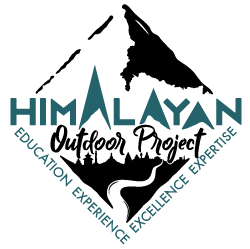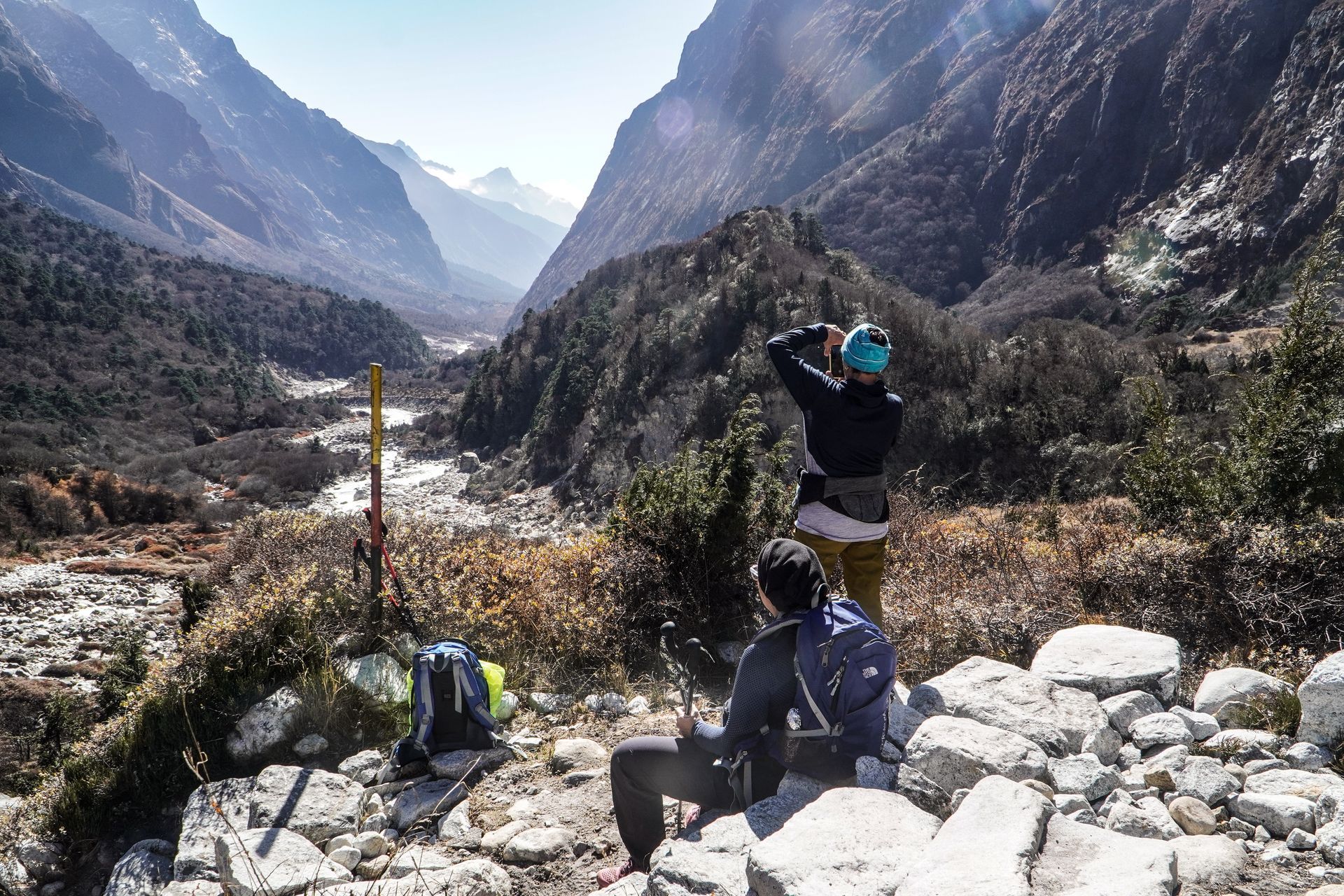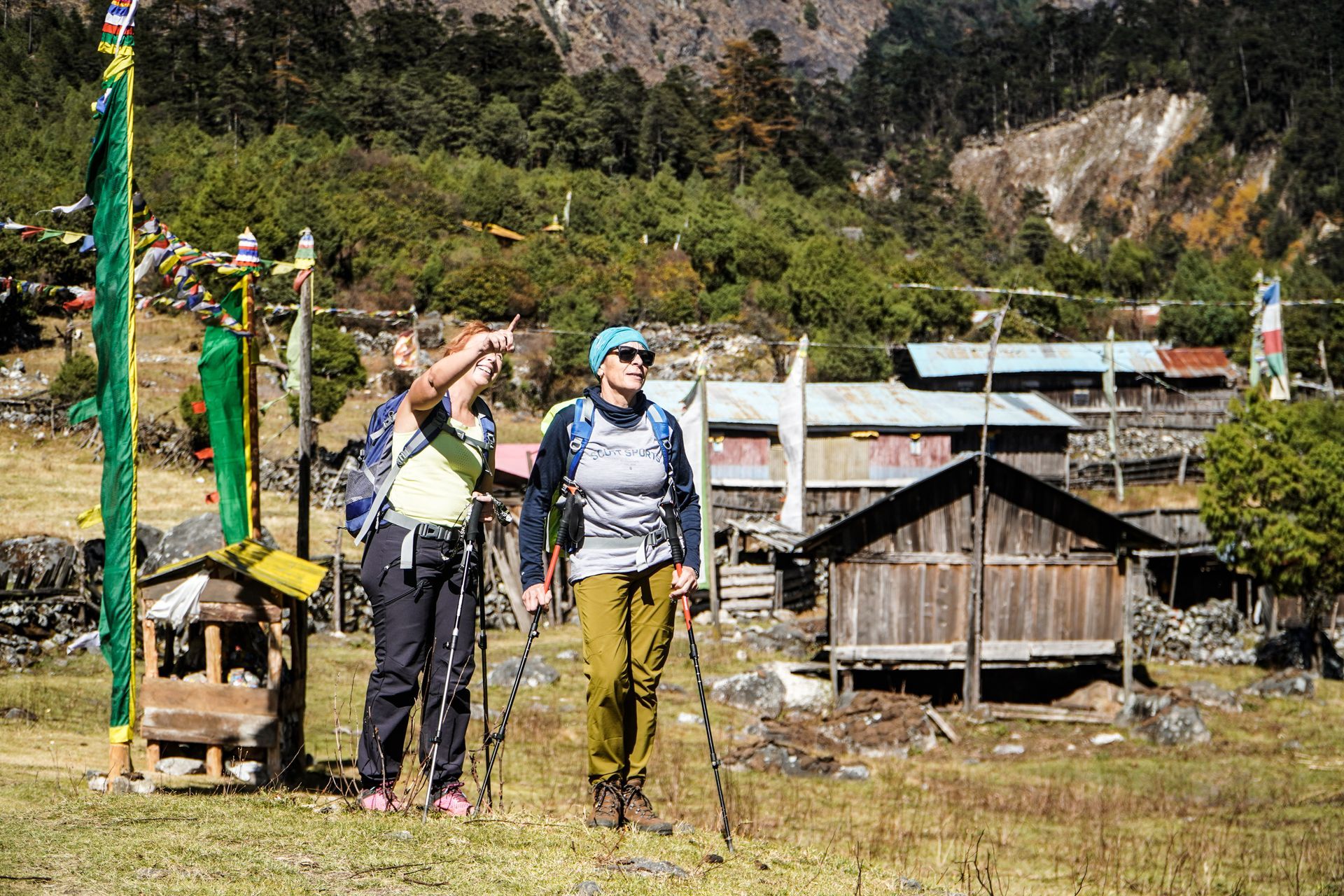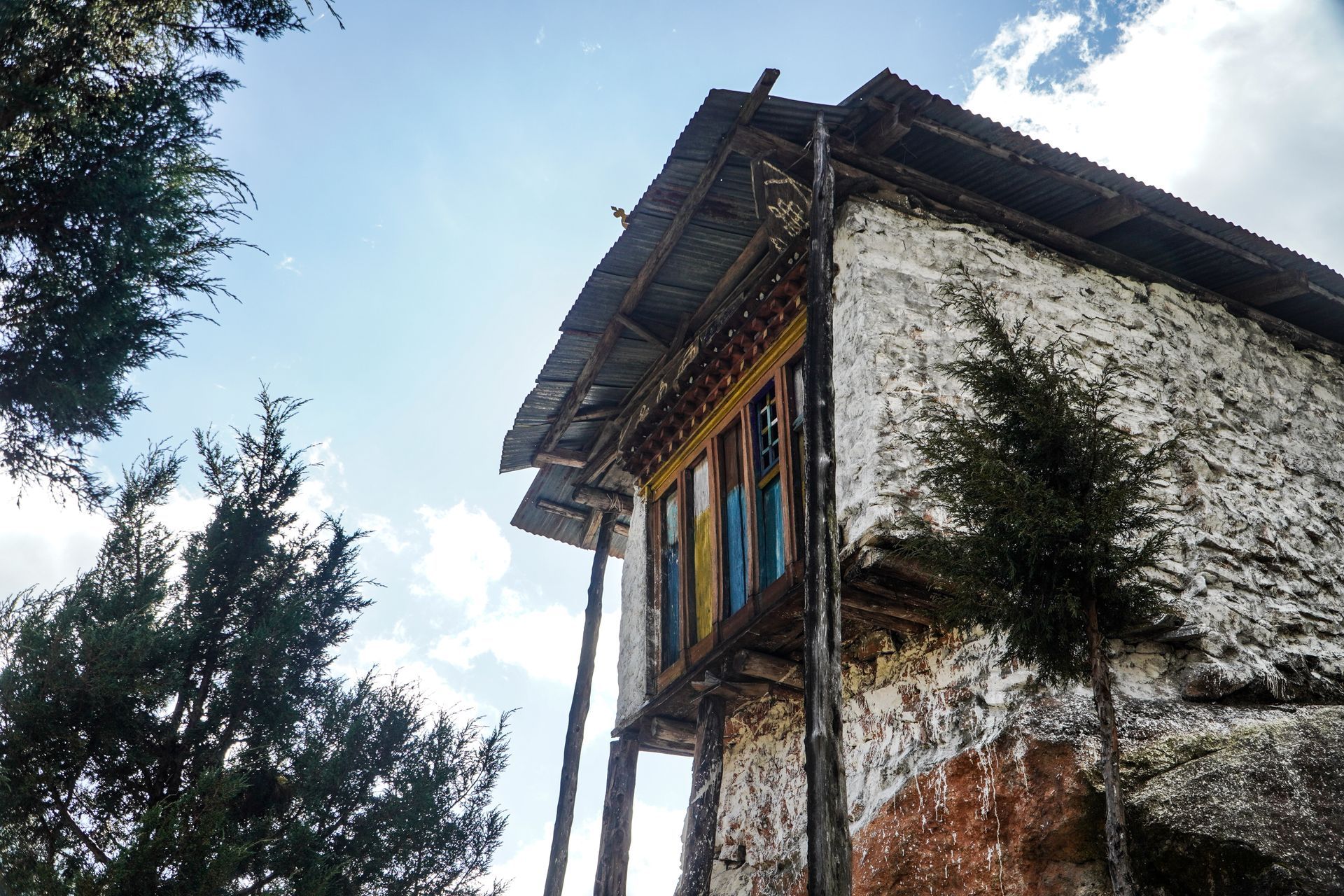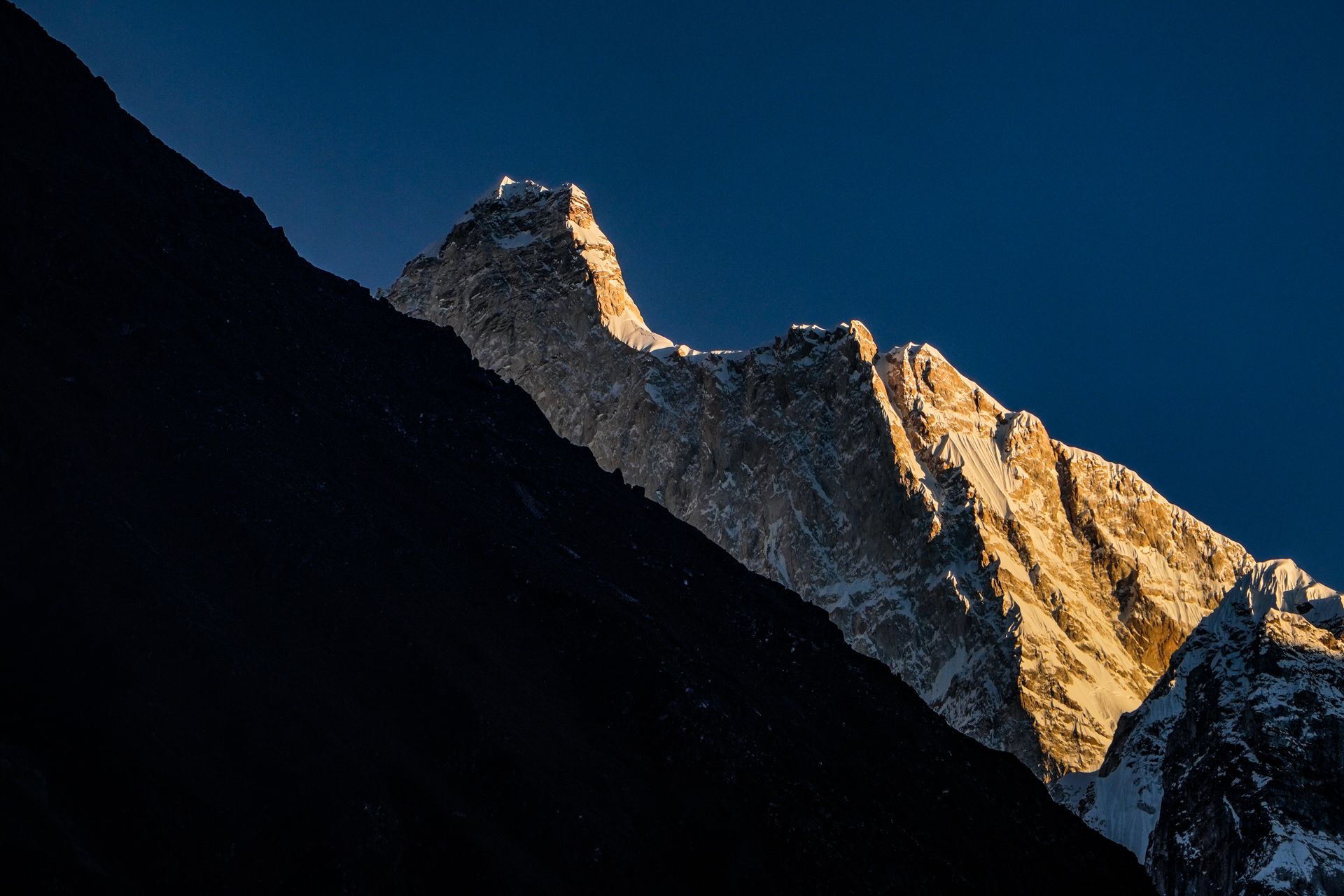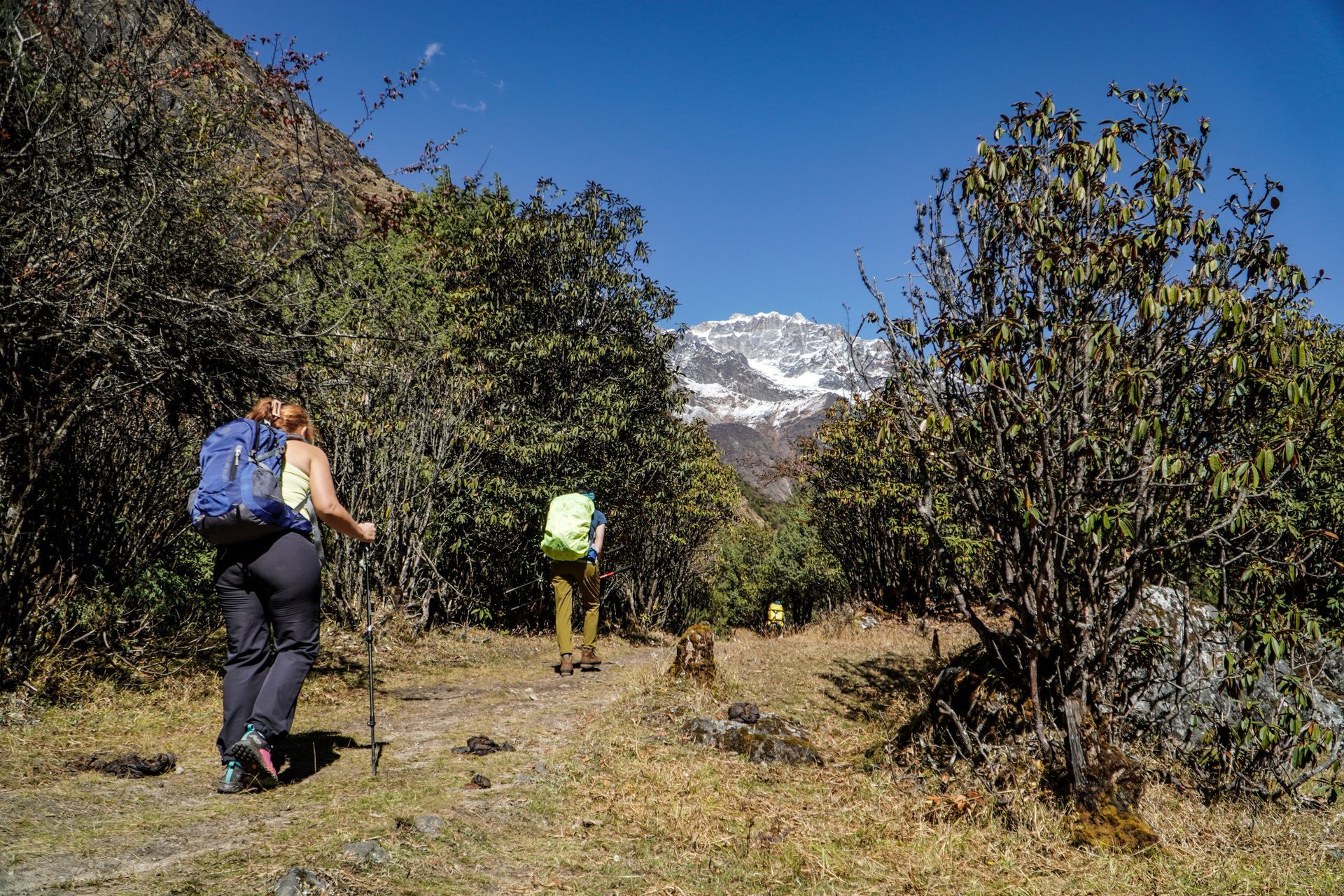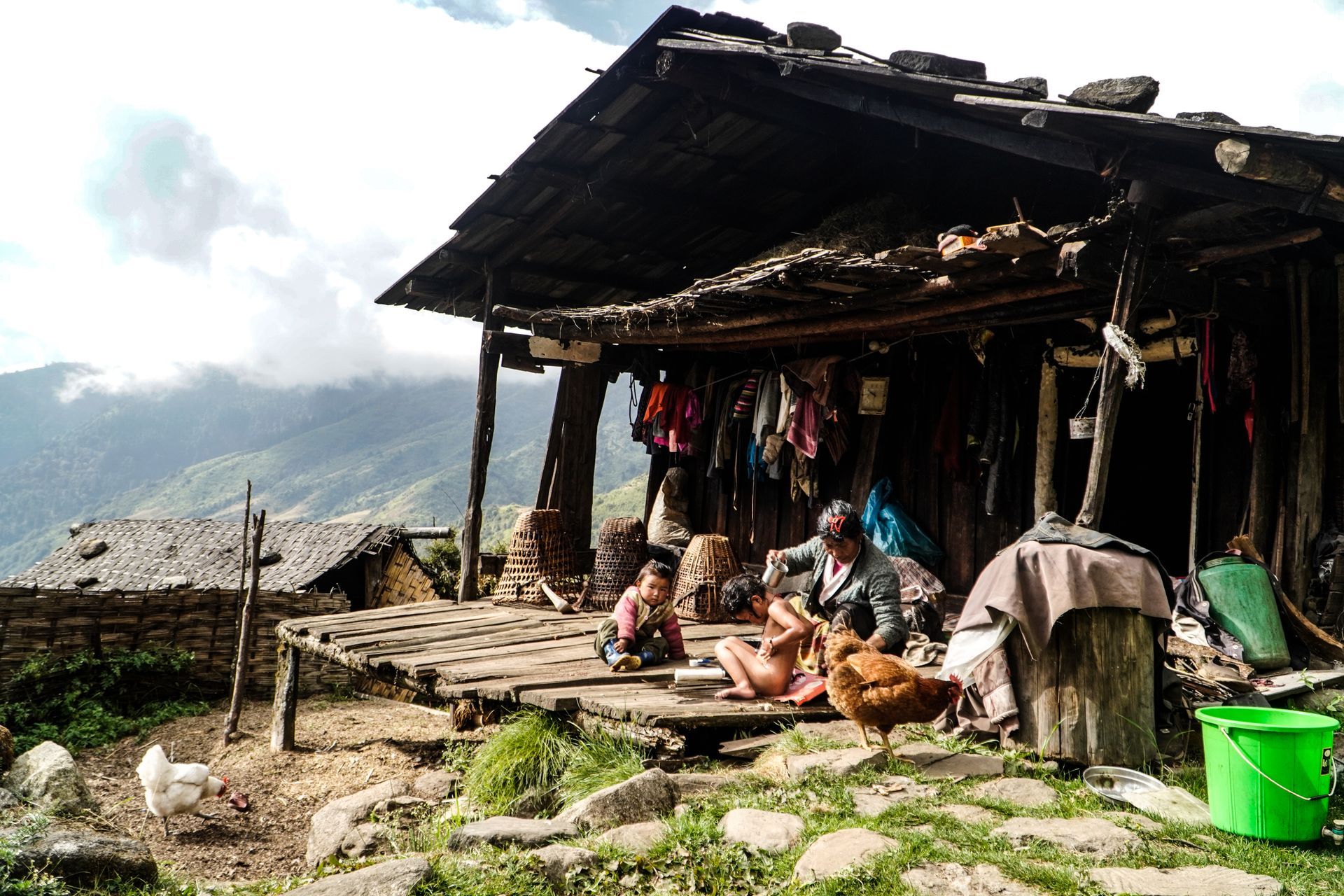
Kanchenjunga Circuit Trek
The Kanchenjunga Circuit Trek is one of Nepal’s most remote and breathtaking adventures, tucked away in the far eastern corner of the country. Known for its untouched natural beauty, this trek offers an up-close view of Kanchenjunga (8,586m), the third-highest mountain in the world, and the culturally sacred Kumbhakarna (Jannu) Mountain (7,710m), which holds deep significance for the Kirat religion.
This trek takes you through stunning villages like Gyabla, Ghunsa, and Phale—each offering a glimpse into vibrant Tibetan-influenced culture and Himalayan life.
The journey’s ultimate highlights are the stunning Kanchenjunga North Base Camp (5,143m) and Sinelapche La Pass (4,724m), where you’ll be surrounded by towering peaks, massive glaciers, and rugged mountain terrain.
If you’re looking for solitude, raw natural beauty, and a chance to explore one of Nepal’s most untouched regions, the Kanchenjunga Circuit promises an adventure of a lifetime!
Small size group (2-12)
OCt - Nov / March-April
Private Transportation
Difficulty - Moderate
Duration - 18 Days
Starting from $3,400
Itinerary
Day 1 - Kathmandu
(Overnight altitude: 1,338m)
We will pick you up at the airport and rest before we meet for the full trek briefing. We’ll meet the rest of the group and go over any questions you may have.
Day 2 - The Journey Begins!!
(Overnight altitude: 506m)
Today marks the start of our adventure in full swing! We’ll catch a morning flight to Bhadrapur in Jhapa, and trust us, this is one of the most breathtaking flights in Nepal. As we soar through the sky, get ready to witness a stunning panoramic view of 8 of Nepal’s towering 8000m peaks, including Everest, Lhotse, Annapurna, and Manaslu. After landing, we’ll check into a comfortable hotel in Bhadrapur to relax and prepare for the journey ahead. The mountains are just the beginning!
Day 3 - Taplejung Express
(overnight altitude: 1,820m)
Buckle up for a 7-8 hour scenic drive to Taplejung! We’ll pass through the gorgeous tea gardens of Ilam and the rolling hills of Panchthar, with picture-perfect views at every turn. The drive is a mix of winding roads, vibrant landscapes, and local charm. By the time we reach Taplejung, you'll be settled in and ready for what’s next!
Day 4 - Up and Over
(Overnight altitude: 1,575m)
After an adventurous off-road drive, we arrive at Sekathum by the afternoon. The bumpy ride is rewarded with incredible views all around. Once there, we settle in, take time to acclimatize, and prepare for the exciting trek that kicks off tomorrow. Rest well, it’s just the beginning!
Day 5 - Kick off!!
(Overnight altitude: 2,310m)
The first day of the trek kicks off with a mix of gentle and challenging trails. The morning starts easy, following flat paths along the beautiful Ghunsa River. As the day progresses, the terrain gets steeper, giving us our first taste of the climbs ahead. The effort is worth it as we hike through stunning landscapes alongside the Ghunsa Khola. By evening, we settle into a tea house in Amjilesha, our cozy haven for the night.
Day 6 - Gyabla
(Overnight altitude: 2,730m)
The trail takes us through lush forests of pine, rhododendron, bamboo, and oak, with grazing yaks, sheep, and goats adding life to the landscape. A stunning cascade along the Ghunsa Khola marks the start of a steep uphill climb to Gyabla. Explore the quaint village before settling in for the night.
Day 7 - The Beautiful Valley of Ghunsa
(Overnight altitude: 3,595m)
The trek begins with a steep descent to the Ghunsa Khola, followed by a scenic walk along its southern bank. We pass through Phale, a Tibetan village with a rich history, then tackle a gradual ascent alongside the river to reach Ghunsa. Overnight at Ghunsa.
Day 8 - Acclimate
Take it easy today and soak in the charm of Ghunsa, a well-facilitated Himalayan village. Explore the local monastery, visit the school, and enjoy some surprisingly good coffee at cozy spots around the village. A perfect day to recharge and acclimatize before heading higher!
Day 9 - Khambachhen Calms
(Overnight altitude: 4,095m)
We follow the Ghunsa River through stunning pine and rhododendron forests, with scenic streams, waterfalls, and glacial moraines adding to the charm. The highlight of the day? Jaw-dropping views of the iconic Kumbhakarna Mountain alongside Khabur and Phole Shobitonge. A steep climb challenges us before descending into the beautiful Khangbachen village, resting along the Ghunsa Khola.
Day 10 - Lhonak
(Overnight altitude: 4,78om)
The trail turns harsh as we climb higher, with the air growing colder and drier. A flowy path leads us to the impressive Rothang Glacier, where a steep ascent awaits. From there, we spot Lhonak in the distance, beautifully nestled beside the massive Kanchenjunga Glacier, a view that’s nothing short of breathtaking.
Day 11 - Pangpema North Basecamp
(Overnight altitude: 4,780m)
It’s the big day! We ascend to the base of the world’s third-highest mountain, Kanchenjunga. The trek takes us over rugged glacial moraines and along the ridges of the mighty Kanchenjunga Glacier. The trail is rough, with steep uphills testing our grit. Along the way, keep an eye out for elusive snow leopards and graceful blue sheep. We start early, around 4-5 a.m. to take advantage of calm morning weather for this unforgettable journey to the foothills of a giant.
Day 12 - Descend down to Ghunsa
(Overnight altitude: 3,595m)
The trail turns harsh as we climb higher, with the air growing colder and drier. A flowy path leads us to the impressive Rothang Glacier, where a steep ascent awaits. From there, we spot Lhonak in the distance, beautifully nestled beside the massive Kanchenjunga Glacier, a view that’s nothing short of breathtaking.
Day 13 - Up and Over to Sele la Camp
(Overnight altitude: 4,200m)
We leave behind the bustling village of Ghunsa and trek through the serene Tamo La Pass (3,900m). The trail offers crystal-clear views of Mt. Makalu and the western face of Kanchenjunga. This remote section has no local settlements, adding to the wilderness feel. At the end of the day, we reach Sele La Camp, where a small stone-built teahouse welcomes us for the night.
Day 14 - Pass day
(Overnight altitude: 3,870m)
A tough day ahead! We tackle three major passes—Sele La (4,660m), Mirgin La (4,663m), and Sinelapche (4,724m)—making it one of the more challenging days of the trek. The altitude and steep terrain will test our endurance. Most of the trail is remote, so we'll carry packed lunches as we descend via the south trail to reach Tseram by evening. Expect stunning views and a true mountain adventure!
Day 15 - Lows of Torangden
(Overnight altitude: 2,995m)
We're getting close to the end of our trek, and today is a bit easier. We’ll trek alongside the stunning Simbuwa Khola, surrounded by lush landscapes and peaceful vibes. After a beautiful journey through the lower trails, we’ll reach the charming Himalayan village of Torangden. It’s a perfect place to relax and reflect on the journey so far.
Day 16 - Back to Taplejung
(Overnight altitude: 1,575m)
It’s the final day on the trail, and we start by trekking down to Lapsetar, where we’ll reach by noon. From there, our vehicle will be waiting to drive us back to Taplejung. After a scenic drive, we’ll wrap up this incredible journey, reflecting on the amazing experiences and memories we've made along the way.
Day 17 - Jhapa Again
(Overnight altitude: 506m)
Today, we embark on a scenic drive from Taplejung to Jhapa, passing through the lush landscapes of Illam and Panchthar. By evening, we’ll arrive at the Siddartha Birtamod, where we’ll rest and unwind after an incredible journey through the mountains.
Day 18 - Back to Kathmandu
( Overnight altitude: 1,338m)
We’ll transfer to Bhadrapur airport and hop on a quick flight back to Kathmandu. In just 45 minutes, you’ll be back in the vibrant heart of Nepal, and that’s a wrap on this incredible adventure!
Day 19 - Departure
It’s time to say goodbye! After an unforgettable journey through Nepal’s stunning landscapes, we’ll transfer you to the airport for your departure. Safe travels and hope to see you on another adventure soon!
Cost includes:
- All arrival, departure transfers as per the program by private vehicle.
- 19 days full board Lodge trek with all meals (breakfast, lunch and dinner) with accommodation in a tea house lodge.
- 2 nights tourist standard hotel in Kathmandu including breakfast and government taxes.
- KTM-BDP and BDP-KTM flights.
- All the road transportations via private vehicle during the trip.
- Service of fluent english speaking guides and porters.
- Accommodation, meals, insurance, equipment, and allowances of guides and porters.
- Kanchenjunga Conservation Area entry fee for trek entry fees.
- All the required permits.
- Transportation for all arrival and departure transfers by private vehicle as per the above itinerary.
- Cultural tour in Kathmandu with local guide, transport but entry fee is extra.
- TIMS (Trekkers' Information Management System) fee.
- All applicable government taxes (13% VAT and 10% tourism service charges)
- Ground handling charges and necessary government taxes.
- Farewell and welcome Dinner with the whole trek team.
Cost excludes:
- Lunch and Dinner whilst staying in Kathmandu.
- Entry fee while cultural visit in Kathmandu.
- International flights to Nepal.
- Bottled drinks (mineral water, any cold drinks, and alcoholic drinks) whilst on trek.
- Your travel insurance.
- Expenses of personal nature such as tips for guide, porter and driver, laundry, bar bill, telephone calls etc.
- Nepal visa fee is currently USD$ 50 (Or, £30) for 30 days.
- Any additional activities not in the itinerary.
Things to consider while in Nepal and before coming to Nepal:
- Roads can be unpredictable and bumpy in Nepal—be patient and trust the journey.
- Forgetting personal medications is risky—pack enough for the entire trip as pharmacies are non-existent in these remote areas.
- There’s little to no internet here—disconnect and enjoy the timeless beauty of the wilderness.
- Drinking untreated water can ruin your adventure. Always use purification methods.
- Never overpack.
- Leave footprints not traces.
- Have healthy mind set to respect local culture.
- Remote areas mean minimal facilities—embrace the adventure over comfort.
- Switch off everything and soak in the moments.
- Carry enough cash because sometimes ATMs and other form of payments could not work.
- Dont forget your permits and all the other required documents.
- Stay calm in unexpected situations; panicking never helps, and solutions are always around the corner.
- Don’t rush to the finish line; the magic is in enjoying every step of the journey.
- Stick with the group; wandering off isn’t just unsafe, it’s unnecessary in such vast landscapes.
WHAT TO BRING:
- Hat/Cap
- Beanie/Headband
- Sunglasses
- Neck Buff
- Sunscreen
- Light Base Layer
- Insulating Layer (Fleece or Down)
- Down Jacket
- Raincoat
- Gloves (Warm and Lightweight)
- Trekking Pants (Quick-dry)
- Thermal Bottoms (Optional)
- Trekking Boots
- Camp Shoes/Flip Flops
- Wool Socks (Multiple Pairs)
- Head Torch (with Extra Batteries)
- Water Bottle (Up to 2L)
- Personal Medications
- Camera
- Power Bank/Charger
- Trekking Poles
- Snacks/Protein Bars
- Toilet Paper/Wet Wipes
- Personal Hygiene Items
- First Aid Kit (Basic)
- Map/Guidebook
- Backpack (Daypack for trekking)
- Positive vibes
| What year? | Date | Max Pax | Price per person | |
|---|---|---|---|---|
| 2025 | April 5 - 22 | 12 | $2,950 | |
| 2025 | October 2 - 19 | 12 | $2,950 | |
| 2025 | November 1 - 18 | 12 | $2,950 |
FAQ´S
How Expensive Is Trekking In Nepal?
The cost of trekking in Nepal can depend upon many factors, including the number of days, trekking region, and difficulty level. Many treks are affordable, and some that are expensive.
In general, trekking in the Himalayas of Nepal can cost between US$100 to $200 per person per day. The cost includes trekking permits, accommodation, food, transport, guides and porters, and other expenses.
Do I Need A Trekking Permit In Nepal?
Yes, the majority of the treks in Nepal would require you to have a trekking permit. A common trekking permit that you require are the National Park/Conservation Area Project Permits which is applicable if your trekking trail passes through any national park or conservation area.
Restricted Area Permits are required in certain remote and rural areas near the borders that the Nepal Government highly regulates. Some areas like Upper Mustang, Dolpo, Humla, Kanchenjunga require this permit. An independent trekker cannot collect it. Hence, one should hire a registered Nepali travel agency to acquire the permit.
Are there age restrictions?
People 14 years or older can join the trip. This ensures everyone is physically capable and can follow safety guidelines.
How Difficult Is Trekking In Nepal?
Trekking in Nepal has been categorized into three major difficulty levels - Easy to Moderate, Moderate to Difficult, and Difficult to Challenging.
Trekking in the Himalayas of Nepal often means walking in rugged trails with distant shattered lodges, no transportation facilities in rural areas, chances of high altitude sickness, and unprecedented weather changes in the Himalayas. They add to the challenge of trekking in Nepal.
What Is The Best Time To Visit Nepal For Trekking?
The best season for trekking in Nepal is the Autumn and Spring seasons. The autumn season lasts from September to November, while the Spring season lasts from March to May. These are the best months for trekking in Nepal. The weather is clear during these seasons with blue skies, fresh vegetation, blooming wildflowers, and ideal temperature. The views of the Himalayan range around Nepal are clear.
The winter season from December to February has temperatures dropping to -18 degrees celsius so it is not suitable for higher altitude trek. If you want to plan a trip in winter, keep reading our blogs about winter treks in Nepal. The Monsoon season from June to August is the
How Much Cash Should You Bring On The Trek?
The cash that you need to carry entirely depends upon the length of the trek and if you are opting to plan the trek with a travel agency or not. All the basic facilities like food, accommodation, porters and guides are provided by the travel agency if you go on an all-inclusive package with them. In that case, you need to bring cash only for your personal expenses, tipping and shopping.
What documents should i bring for the tour?
You need to carry your visa, passport, insurance policy documents, and relevant permits while coming for a trek to Nepal. Visa on arrival and some of the permits can be acquired after you land in Nepal as well. To acquire permits you would require to carry 3-4 passport sized photos.
What is the best time of year for these trips?
The sweet spot for trekking in Nepal is from September to November and April to May. With perfect weather conditions.
How physically demanding are the trips?
Trips vary in difficulty, but a general level of fitness is recommended! Our guides will ensure everyone is safe and comfortable!
What if I have dietary restrictions?
Let us know in advance, and we’ll do our best to accommodate your needs!
Can I extend my stay in Nepal?
Of course! Just let us know, and we can help with arrangements.
What Happens If There Is An Emergency?
If there is an emergency while trekking in the himalayas of Nepal, your first point of contact can be our guide who has got the relevant safety training. They will arrange for any rescue mission by coordinating with the travel agency.
